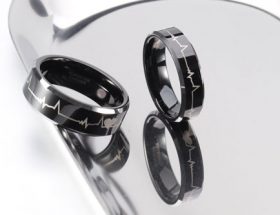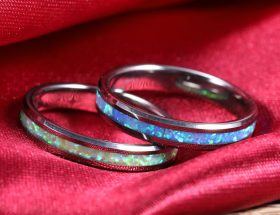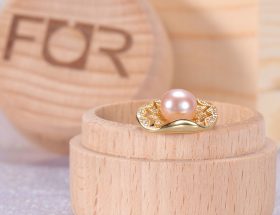Introduction to Diamonds and Carat Measurement
Diamonds have endured for the long haul, representing extravagance, responsibility, and the unyielding soul of nature. For a long time, they’ve been prized, for their radiance as well as for the narratives they convey. Fundamental to these stories, and to the worth of each and every precious stone, is an action called the “carat.” Be that as it may, what is stone ct? We should uncover this jewel of information.
Historical Origin of the Carat System
Old days, in their quest for precision, utilized carob seeds as stabilizers on balance scales, because of their predictable weight. The term ‘carat’ draws motivation from these modest seeds, developing into the universally perceived metric we use today.

Decoding Diamond ct
Simply put, when we ask “what is diamond ct?”, we’re inquiring about the weight of the diamond. A single carat equates to 200 milligrams. This weight measurement is paramount in determining a diamond’s value and is universally adopted in the gemstone realm.
Carat vs. Size: Busting Myths
As opposed to mainstream thinking, carat isn’t a proportion of size, however weight. Consequently, two precious stones with a similar carat weight could seem unmistakable in size because of variables like cut, profundity, and generally speaking shape.

Beyond Carat: The Famous 4Cs
When discussing diamonds, one cannot merely focus on carats. There are three other crucial metrics, often referred to as the 4Cs of diamonds – Carat, Cut, Clarity, and Color.
Cut: This refers to how well the diamond is shaped and fashioned. The brilliance of a diamond often hinges on its cut. It dictates how light travels within the diamond, and a well-cut diamond can reflect light beautifully, making it sparkle.
Clarity: This measures the clearness or cleanliness of a diamond. It considers both internal (inclusions) and external (blemishes) flaws. Diamonds with the least and smallest inclusions receive the highest clarity grades.
Color: Surprisingly, this measures the lack of color in a diamond. A perfect diamond has no hue, like a drop of pure water, and consequently, higher value.
Market Dynamics and Diamond Valuation
The cost of not entirely settled via carat weight alone. A few elements become possibly the most important factor, for example, the worldwide economy, mining costs, request supply elements, and individual 4Cs of the jewel. For example, during financial slumps, the interest for extravagance products, including jewels, could diminish, possibly influencing costs.

Role of Brands in Diamond Pricing
Established brands like Tiffany & Co. or Cartier have carved a niche in the diamond industry. These brands offer not just a diamond but a legacy, a brand promise, and often, a unique cut. This brand value can lead to higher prices for diamonds. For many, owning a diamond from these legacy brands is about prestige as much as it is about the gem itself.
Synthetic vs. Natural Diamonds
With mechanical progressions, lab-developed diamonds have entered the market. While they share similar physical and substance properties as normal jewels, they vary in beginning, and frequently in cost. Lab-developed jewels as a rule cost not exactly regular ones, yet they’re turning into a famous decision for those looking for morally obtained, harmless to the ecosystem choices.
Maintaining Diamond Value: Care and Protection
Maintaining a diamond’s brilliance isn’t just about cleaning it, although regular cleaning can help. It also makes sure it doesn’t come into contact with materials that could scratch it. Even though diamonds are the hardest material known, they can still be shattered by sudden, violent impacts. Therefore, you have to learn how to take care of it when wearing and storing it. It is recommended to use a soft cleaning cloth and a small amount of soapy water to clean the surface, and then put it into a jewelry bag for storage after drying.

How to Choose Diamonds: An Expert’s Guide
Choosing the right diamond goes beyond the 4Cs. One should consider the shape of the diamond, the type of setting, the setting metal, and even the design of the ring. Experts recommend considering the recipient’s style and the wearability of the jewelry, especially for items like engagement rings that are worn daily. For example, the most popular round and oval cut diamonds have excellent refraction and appearance.
FAQs
What does ‘ct’ stand for in diamonds?
‘ct’ is an abbreviation for ‘carat,’ a unit of weight used to measure diamonds and other gemstones. It’s equivalent to 200 milligrams or 0.2 grams.
Why is carat weight important when buying a diamond?
Carat weight plays a significant role in determining the diamond’s size, and for many people, size is a visual indicator of the diamond’s value. However, it’s essential to consider all the 4Cs, not just carat weight, to gauge the diamond’s overall quality and worth.
Do two diamonds of the same carat weight cost the same?
Not necessarily. While carat weight is a crucial factor in determining a diamond’s price, other factors like its cut, clarity, and color also play a significant role. For instance, a 1-carat diamond with flawless clarity and color might cost more than a 1-carat diamond with visible inclusions.
Is it possible for smaller diamonds to be more valuable than larger ones?
Yes, if a smaller diamond has superior cut, clarity, and color compared to a larger diamond, it can indeed be more valuable. The overall quality often dictates a diamond’s worth more than size alone.
How does the cut of a diamond affect its sparkle?
The cut of a diamond determines how light reflects and refracts within it. A well-cut diamond will effectively reflect light, giving it a brilliant sparkle, while a poorly cut diamond might appear dull, regardless of its carat weight or clarity.
Are lab-grown diamonds worth less than natural diamonds?
Typically, lab-grown diamonds are priced less than natural diamonds because they’re more abundant and don’t have the same historical and geological significance. However, they possess the same physical and chemical properties as natural diamonds.
Environmental Implications of Diamond Mining
Diamond mining, particularly open-pit mining, has environmental consequences. Habitats get disrupted, and ecosystems can be severely affected. Moreover, the vast amounts of earth removed in the mining process can contribute to deforestation, loss of biodiversity, and even erosion. It’s crucial for diamond retailers and consumers alike to be aware of these impacts and support sustainable mining practices.
The Cultural Significance of Diamonds
Across various cultures, diamonds have been revered, symbolizing luxury, power, and eternal love. In Western cultures, diamonds often play a pivotal role in engagement ceremonies, symbolizing commitment. However, in some cultures, diamonds have spiritual significance, symbolizing clarity, invincibility, and strength.
Investing in Diamonds: A Tangible Asset
Diamonds are not just symbols of love or luxury; they’re also tangible assets. Some investors believe in the stability of diamonds as an investment compared to volatile markets. Like any investment, it requires a keen understanding of the market, the product, and the timing.

Conclusion
The universe of precious stones is huge, loaded up with shine, interest, and importance that works out positively past the surface. ” What is jewel ct?” was our passage into this shining universe, however as we ventured through, we understood that understanding jewels isn’t just about knowing their weight in carats yet valuing their set of experiences, their effect on societies, economies, and conditions. A jewel is a wonder of nature, an image of perseverance, and a demonstration of the world’s staggering ability to make excellence under tension.









